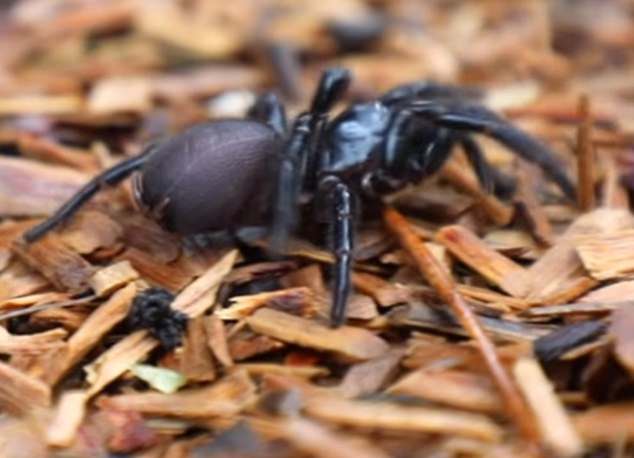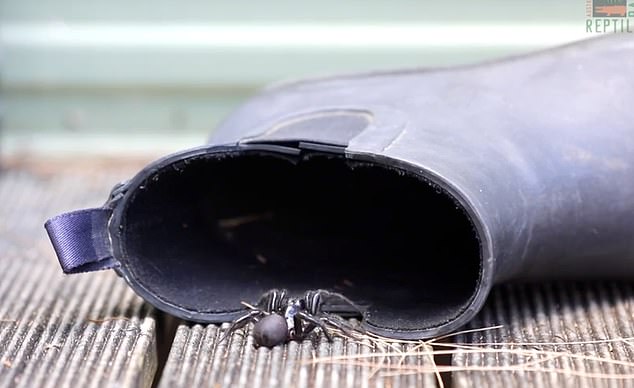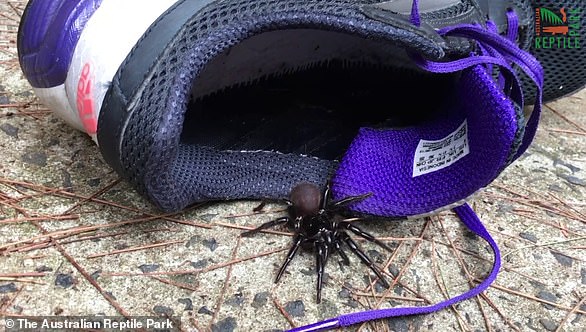‘Extreme’ spider warning as highly-venomous funnel webs emerge for breeding season – this is where they might be lurking in your home
A warning has been issued to exercise ‘extreme caution’ as the breeding season for deadly funnel web spiders begins.
Just one bite can kill a human in less than 15 minutes, with the fast-acting neurotoxin delta-hexatoxin attacking the nervous system and shutting down vital organs.
In the coming weeks, male funnel webs will appear in homes and backyards as they leave their dens to look for a mate.
They are mainly found on the east coast of Australia in dense bushes or under rocks and tree trunks.
But the creepy crawlies have also been known to inhabit backyards, garages, and even the shoes of unsuspecting people.

A warning has been issued to exercise ‘extreme caution’ as the breeding season for deadly funnel web spiders (pictured) begins
People in Sydney and other parts of NSW can also find egg sacs on the spiders, each containing up to 150 baby spiders.
“Funnel web breeding season has arrived and all the rain this year has created damp conditions for funnel web spiders to thrive,” said Liz Gabriel, director of the Australian Reptile Park.
‘When found in homes, Sydney funnel web spiders prefer cool, damp places such as the laundry, the garage or in shoes left on the floor.
“It’s best to make sure you don’t leave laundry and clothes on the floor,” she said.
‘If you leave your shoes outside, make sure you check them first before blindly putting your foot in them, as shoes can be the perfect lair for funnel web spiders.’
Ms Gabriel also advised that pool filters should also be checked and cleaned regularly.
There have been only 13 recorded deaths from funnel web spiders in Australia – all of which occurred before 1981, when antivenom treatments became available.
That’s why the Australian Reptile Park has asked the public to capture any funnel webs they see and take them to delivery points – but only if it is safe to do so.

In the coming weeks, male funnel webs will appear in homes, backyards and even in shoes (pictured) as they leave their dens to look for a mate

The Sydney funnel-web spider (pictured) is the type most likely responsible for the thirteen deaths attributed to bites
The Reptile Park is the only supplier of funnel web antivenom and needs 150 spiders to make just one vial of the potentially life-saving treatment.
“It’s important that Australians have the right first aid and know how to catch the spiders safely so we can continue to extract their venom and save lives,” Gabriel said.
“We rely on public donations from funnel web spiders to build our milking individuals,” Ms. Gabriel said.
If you have caught a funnel web spider, you can find details of the ARP’s drop-off locations here.

